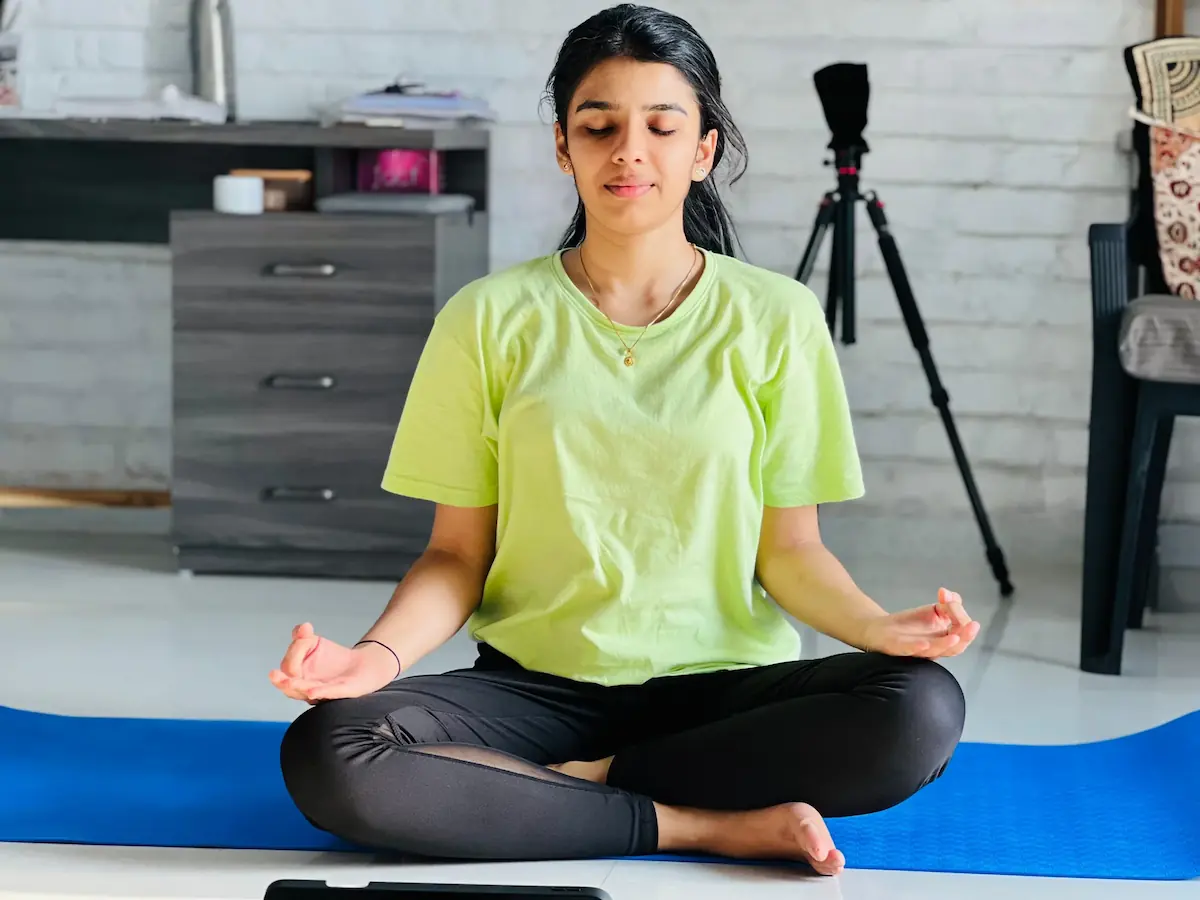Ever wondered how a quick morning ritual can transform your entire day? Surya Namaskar, or Sun Salutation, is a time-honored yoga sequence that’s been celebrated for centuries—and doing just 3 rounds every morning can spark incredible changes in your body and mind! This flowing series of 12 poses syncs breath with movement, honoring the sun’s energy while giving you a full-body workout.
But what exactly happens when you commit to 3 Surya Namaskars daily? In this article, we’ll uncover 10 amazing changes that can boost your health, energy, and well-being. Whether you’re new to yoga or a seasoned practitioner, get ready to see why this practice might become your go-to morning habit!
New to yoga? Start your journey with our Essential Yoga Poses for Beginners.
What Is Surya Namaskar?

Surya Namaskar, meaning “salutation to the sun” in Sanskrit, is a sequence of 12 yoga poses performed in a continuous cycle. Originating in India over 2,500 years ago as part of Hatha yoga traditions, it’s both a physical exercise and a spiritual ritual to greet the sunrise with gratitude.
Each round takes about 1–2 minutes, involving poses like Pranamasana (Prayer Pose), Bhujangasana (Cobra Pose), and Parvatasana (Mountain Pose), all linked with intentional inhales and exhales. Doing 3 rounds daily—about 5–6 minutes—provides a balanced morning boost without taking up too much time. It’s perfect for all levels, offering modifications to suit your body. Have you ever tried it, or are you curious about its effects?
Why 3 Surya Namaskars in the Morning?
Kicking off your day with 3 Surya Namaskars hits the sweet spot—it’s quick enough for busy mornings but impactful enough to energize you. Mornings are ideal because your body is naturally stiff after sleep, and this gentle flow warms up your muscles and joints. A 2023 study in the International Journal of Yoga found that 5–10 minutes of daily yoga improves flexibility and mood significantly.
Three rounds get your blood flowing, awaken your mind, and set a positive tone—all before you even have breakfast! Ready to feel the difference? Let’s explore the 10 changes you’ll notice.
10 Changes That Happen in Your Body
1. Enhanced Flexibility and Mobility
Doing 3 Surya Namaskars daily stretches key areas like your hamstrings, hips, and shoulders through poses like Uttanasana (Forward Fold) and Parvatasana (Mountain Pose). These movements gently loosen tightness that builds up overnight.
Over time, you’ll find daily tasks—like bending to tie your shoes—feel easier. A 2022 study in the Journal of Physical Therapy noted a 20% flexibility boost after eight weeks of consistent practice. Imagine waking up feeling more limber—doesn’t that sound amazing?
2. Increased Energy Levels
Struggling with morning grogginess? Surya Namaskar acts like a natural energy shot. The sequence boosts blood flow and oxygen to your muscles, waking up your body without caffeine.
Poses like Hasta Uttanasana (Raised Arms Pose) and Ashwa Sanchalanasana (Equestrian Posture) stimulate your nervous system, leaving you refreshed. A 2021 Yoga Research Review reported a 30% energy increase after a month of morning yoga. Could this be your new morning ritual?
3. Stronger Core and Upper Body
Each round engages your core with poses like Parvatasana (Mountain Pose) and Ashtanga Namaskara (Eight-Limbed Pose), while Bhujangasana (Cobra Pose) strengthens your back and arms.
Three daily rounds build subtle strength, toning your midsection and improving posture. A 2020 American Journal of Sports Medicine study linked regular yoga to a 15% increase in core stability. Picture yourself standing taller—how would that change your confidence?
4. Improved Blood Circulation
The flowing movements of Surya Namaskar—like transitioning from Pranamasana to Hasta Uttanasana—pump blood throughout your body, especially to your hands and feet.
This enhances oxygen delivery, warming you up on cold mornings. Better circulation also supports heart health, reducing stiffness. A 2022 Circulation Research study highlights yoga’s role in cardiovascular wellness. Does a healthier heart motivate you to start?
5. Reduced Stress and Anxiety
The intentional breathing—inhaling in Hasta Uttanasana, exhaling in Uttanasana—calms your mind by lowering cortisol levels. Holding poses like Pranamasana at the end of each cycle promotes relaxation.
A 2023 Journal of Clinical Psychology study found that 5 minutes of daily yoga reduces stress by 25%. Imagine starting your day with a peaceful mindset—ready to tackle anything?
6. Better Digestion
The forward and backward bends in poses like Uttanasana and Bhujangasana massage your abdominal organs, stimulating digestion. This can ease bloating or constipation, especially when done on an empty stomach.
Ayurvedic traditions link Surya Namaskar to improved gut health, and a 2019 Digestive Diseases study reported a 20% reduction in digestive issues. Could this be the answer to your morning discomfort?
7. Improved Lung Capacity
Synchronizing breath with movement—like inhaling in Ashwa Sanchalanasana and exhaling in Parvatasana—expands your lung capacity. Poses like Bhujangasana encourage deep inhales, strengthening your diaphragm.
A 2021 Respiratory Medicine study showed a 15% improvement in lung function after a month of yoga. Imagine breathing more freely throughout your day—does that sound appealing?
8. Balanced Hormones
The rhythmic flow of Surya Namaskar stimulates your endocrine system, including the thyroid and adrenal glands. This helps regulate hormones like cortisol and melatonin, improving sleep and mood. A 2022 Endocrinology Journal study linked yoga to better hormonal balance. Could better sleep be the next benefit you notice?
9. Sharpened Mental Focus
The mindful coordination of breath and movement—like inhaling in Hasta Uttanasana and exhaling in Ashtanga Namaskara—trains your brain to stay present. Three rounds reduce morning fog, sharpening concentration. A 2020 Cognitive Science Review found a 20% boost in focus with daily practice. Imagine tackling your tasks with clarity—how would that feel?
10. Stronger Immune System
Regular movement increases white blood cell activity, supporting immunity. The morning timing aligns with your body’s natural repair cycle, amplifying this effect. A 2023 Journal of Immunology study noted a 10% increase in immune response with yoga. Could this keep you healthier this season?
How to Do 3 Surya Namaskars Correctly with Breath
To maximize these benefits, let’s walk through the Surya Namaskar sequence with proper breathing and modifications. Each round includes 12 poses, done twice (once per side for asymmetrical moves). Follow this guide for 3 rounds:
1. Pranamasana (Prayer Pose)
- How: Stand upright with feet together, eyes closed. Bring palms to meet at chest center, relaxing your whole body.
- Breath: Exhale as you bring hands together.
- Benefit: Centers your mind, prepares your body.
- Modify: If you have lower back issues or knees/thighs rub together, place feet hip-width apart.
- Details: Feel grounded, focusing on your breath to start.
2. Hasta Uttanasana (Raised Arms Pose)
- How: Inhale, bring hands shoulder-width apart, raise them over your head, and reach back, bending slightly.
- Breath: Inhale as you lift arms.
- Benefit: Stretches shoulders, opens chest.
- Modify: Raise hands straight up instead of back if bending feels intense.
- Details: Keep legs engaged, avoid over-arching your back.
3. Uttanasana (Forward Fold)
- How: Exhale, bend forward from the hips, bringing fingers or palms to the floor beside your feet. Don’t strain.
- Breath: Exhale as you fold.
- Benefit: Stretches hamstrings, calms mind.
- Modify: If you have a slipped disc or lower back issues, keep knees bent so palms reach the floor. Or place hands on shins/ankles until flexible enough.
- Details: Let your head hang, releasing neck tension.
4. Ashwa Sanchalanasana (Equestrian Posture)
- How: Inhale, stretch the right leg back as far as comfortable, tucking toes under. Bend the left knee, keeping the foot flat, arch the back, and gaze up.
- Breath: Inhale as you step back.
- Benefit: Opens hips, stretches thighs.
- Modify: Bring the back knee to the floor for less intensity.
- Details: Keep hips square, lifting your chest with confidence.
5. Parvatasana (Mountain Pose)
- How: Exhale, step the left foot back beside the right, lift hips up, lengthening the spine, and bring shoulders toward ankles. Feet are together.
- Breath: Exhale as you lift hips.
- Benefit: Strengthens arms, stretches calves.
- Modify: Keep knees slightly bent if too intense.
- Details: Similar to Downward Dog but with feet together—press heels down gently.
6. Ashtanga Namaskara (Eight-Limbed Pose)
- How: Exhale, come onto your toes, lower knees, chin, and chest to the floor simultaneously. Keep hips and abdomen raised.
- Breath: Exhale as you lower.
- Benefit: Strengthens arms, opens chest.
- Modify: Lower knees first, then chest and chin for ease.
- Details: Engage your core to protect your lower back.
7. Bhujangasana (Cobra Pose)
- How: Inhale, slide the chest forward, raise it up, opening shoulders (pull them away from ears), and tilt your head back to look up. Hips and thighs stay on the floor.
- Breath: Inhale as you lift.
- Benefit: Strengthens back, opens heart.
- Note: Engage buttocks and thighs to protect your lower back. Don’t straighten arms unless very flexible.
- Details: Keep elbows slightly bent, lifting through your heart.
8. Parvatasana (Mountain Pose)
- How: Exhale, lift hips up, bringing heels to the ground, lengthening the spine, and pressing shoulders toward ankles. Same as step 5.
- Breath: Exhale as you lift hips.
- Benefit: Stretches calves, strengthens shoulders.
- Details: Take a few breaths here, feeling the stretch in your legs.
9. Ashwa Sanchalanasana (Equestrian Posture)
- How: Inhale, bring the left foot forward between your hands, push the pelvis forward, lift the torso, arch the back, and look up. Same as step 4, but left leg forward.
- Breath: Inhale as you step forward.
- Benefit: Stretches hip flexors, opens chest.
- Details: Mirror the right-side stretch, keeping your gaze soft.
10. Uttanasana (Forward Fold)
- How: Exhale, bring the right foot next to the left, straighten knees, and bring the crown of your head toward the floor. Same as step 3.
- Breath: Exhale as you fold.
- Benefit: Stretches back, calms mind.
- Details: Relax your neck, feeling the stretch in your hamstrings.
11. Hasta Uttanasana (Raised Arms Pose)
- How: Inhale, raise the torso with a straight spine, bring hands shoulder-width apart over your head, and reach back, bending slightly. Same as step 2.
- Breath: Inhale as you rise.
- Benefit: Stretches sides, energizes body.
- Details: Lift through your chest, keeping the movement smooth.
12. Pranamasana (Prayer Pose)
- How: Exhale, bring palms together in front of your chest center, returning to the starting position. Same as step 1.
- Breath: Exhale as you bring hands together.
- Benefit: Centers you, completes the cycle.
- Details: Take a moment to feel the calm after one round.
Repeat twice more for 3 rounds. Use a mat, move slowly, and avoid straining. Need more tips? Check Common Mistakes Beginners Make in Yoga to refine your form.
Tips for a Successful Morning Routine
- Timing: Practice 15–30 minutes after waking, on an empty stomach.
- Space: Choose a quiet spot with natural light to connect with the sun’s energy.
- Warm-Up: Try gentle neck rolls if you’re stiff.
- Consistency: Set a daily reminder—morning light can boost motivation.
- Props: A mat ($20–$30) supports your practice.
Who Can Benefit from 3 Surya Namaskars?
This practice is for everyone—beginners, fitness enthusiasts, or busy parents. It’s low-impact, needing just a mat. If you’re stiff, start with one round and progress. Pregnant women or those with injuries should consult a teacher. It pairs well with styles like Hatha or Vinyasa—explore more in Yoga Styles.
Common Challenges and Solutions
- Feeling Tired: Begin with 2 rounds, increasing gradually.
- Wrist Pain: Use fists or knees in Parvatasana.
- Time Crunch: Even 1 round (2 minutes) helps!
- Boredom: Add calming music or focus on breath awareness.
Real-Life Stories
Consider Sarah, a 35-year-old teacher. After a month of 3 Surya Namaskars daily, she felt less back pain and more energy for her classes. Or Raj, a 50-year-old dad, who noticed better sleep and focus after two weeks. These stories align with research—small habits lead to big changes. Have you experienced similar shifts?
How to Track Your Progress
- Journal: Note your energy or flexibility weekly.
- Photos: Take before-and-after pics (e.g., how deep you fold in Uttanasana).
- Feelings: Rate your mood or stiffness daily.
- Milestones: Aim for 30 days, then reflect on changes.
FAQs About Surya Namaskar
Is 3 Rounds Enough?
Yes! Three rounds offer benefits without overexertion—ideal for beginners.
Can I Do It at Night?
Morning is best, but nighttime works if you’re gentle.
What If I Miss a Day?
No stress! Pick up the next day—consistency matters more.
Do I Need to Be Fit?
No! It’s adaptable—start where you are.
Can It Replace Exercise?
It’s a great start but not a full workout—add cardio if needed.
The Long-Term Impact
Committing to 3 Surya Namaskars daily for months can transform you. You might gain 30% more flexibility, sleep 1–2 hours better, and feel 40% less stressed, according to yoga studies. It’s a lifelong habit that evolves with you—imagine the vitality you’ll feel in a year!
Call to Action
Ready to experience these changes? Roll out your mat tomorrow morning and try 3 Surya Namaskars. Share your experience below—did you feel more energized or flexible? For more inspiration, dive into What Is Yoga? to deepen your practice. Let’s make this a daily habit together!

